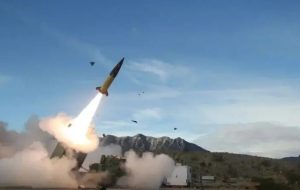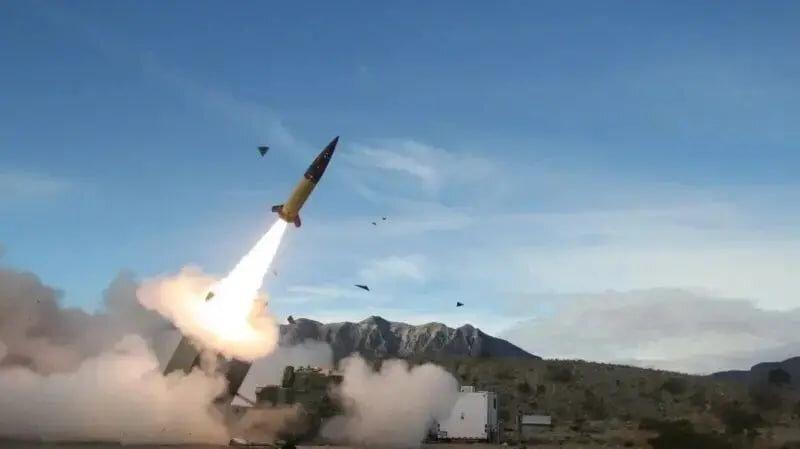Biden allows Ukraine to use long-range US weapons in Russia: officials
President Joe Biden has authorized Ukraine to use powerful long-range American weapons inside Russia, according to two US officials familiar with the decision, as North Korean troops deploy in support of Moscow’s effort. President Joe Biden has authorized Ukraine to use powerful long-range American weapons inside Russia, according to two US officials familiar with the decision, as


President Joe Biden has authorized Ukraine to use powerful long-range American weapons inside Russia, according to two US officials familiar with the decision, as North Korean troops deploy in support of Moscow’s effort.
President Joe Biden has authorized Ukraine to use powerful long-range American weapons inside Russia, according to two US officials familiar with the decision, as North Korean troops deploy in support of Moscow’s effort.
The decision comes as Moscow has deployed nearly 50,000 troops to Kursk, the southern Russian region where Kyiv launched its surprise counteroffensive in the summer, to prepare to take back territory.
The weapons are intended to be used primarily in Kursk for now, a US official said. With its huge troop amassment there, Russia is trying to take Kursk off the table as a potential bargaining chip for the Ukrainians in any future peace talks, something that the US does not want to see. The idea is to help Ukraine hold on to Kursk for as long as possible, the official said.
Thousands of North Korean troops have deployed to Kursk as part of Russia’s offensive, sparking concern from Biden and his advisers that their entry could lead to a dangerous new phase in the war.
The decision to allow the use of the Army Tactical Missile Systems, or ATACMS, inside Russia had been under consideration for months. American officials had been divided on the wisdom of allowing the new capability. Some had concerns about escalating the war, while others worried about dwindling stockpiles of the weapons.
The US refused to even provide ATACMS to Ukraine for the first two years of the war, in part because of readiness concerns as the powerful missiles require time and complex components to produce. But Biden secretly approved the transfer of the long-range ATACMS missiles in February for use inside Ukrainian territory, and the US delivered the missiles in April.
Ukrainian President Volodomyr Zelensky had been pressing Washington to allow use of the weapons inside Russia, too, arguing he needed the capability to gain momentum in his war effort.
When Biden and Zelensky last met at the White House in September, the Ukrainian leader came with a detailed list of targets inside Russia that he wanted to hit with US-provided long-range missiles, according to sources familiar with the meeting.
The list was a key part of Zelensky’s “victory plan” for winning the war. Biden, who nearly three years into the war had prohibited the Ukrainians from deploying the missile systems for deep strikes into Russia, was not entirely dismissive of the request, the sources said. But he was ultimately noncommittal, and the leaders agreed to keep discussing the issue.
Zelensky responded to the news Sunday, saying on Telegram, “Missiles will speak for themselves.”
“Today, there is a lot of talk in the media about us receiving a permit for respective actions. Hits are not made with words. Such things don’t need announcements. Missiles will speak for themselves,” he said.
President Vladimir Putin in September warned the West that Russia could use nuclear weapons if it was struck with conventional missiles, and that Moscow would consider any assault supported by a nuclear power to be a joint attack. The declaration was the Kremlin’s answer to deliberations at the time in the US and Britain about whether to give Ukraine permission to fire conventional Western missiles into Russia.
For months, US officials provided a litany of reasons why changing the policy would not make a substantial difference. Chief among those was the limited supply of ATACMS that Kyiv had received from the Biden administration, a finite stockpile that could not be quickly replenished because of the long lead time on producing the advanced missiles. US officials also argued that Ukraine has its own burgeoning drone industry that is able to manufacture one-way attack drones with longer ranges than ATACMS.
The approximate 200-mile range of the US long-range missiles was not far enough to inflict substantive damage on one of the most important targets: the Russian aircraft launching powerful long-range glide bombs that have devastated Ukrainian targets. One US official estimated that 90% of those aircraft were outside the range of ATACMS, as Russia pulled key targets farther from the front line.
The Biden administration had rebuffed Ukraine’s requests to change its position on the long-range missiles, but like so many other ostensibly rigid policies established over nearly three years of war — including on Patriot missiles, Abrams tanks and F-16 fighter jets — the White House ultimately relented
It’s unclear whether the administration will provide more ATACMS to Ukraine with the $7.1 billion remaining in Presidential Drawdown Authority, which allows the military to pull stocks directly from US inventories to send to Kyiv, or whether the policy will apply only to the relatively few missiles that Ukraine still has.
The US and its allies had been working to ensure that Ukraine has what it needs through the end of 2025 as a way to “Trump-proof” US security aid. President-elect Donald Trump has repeatedly claimed that the Ukraine-Russia war would not have started if he had been commander in chief.
